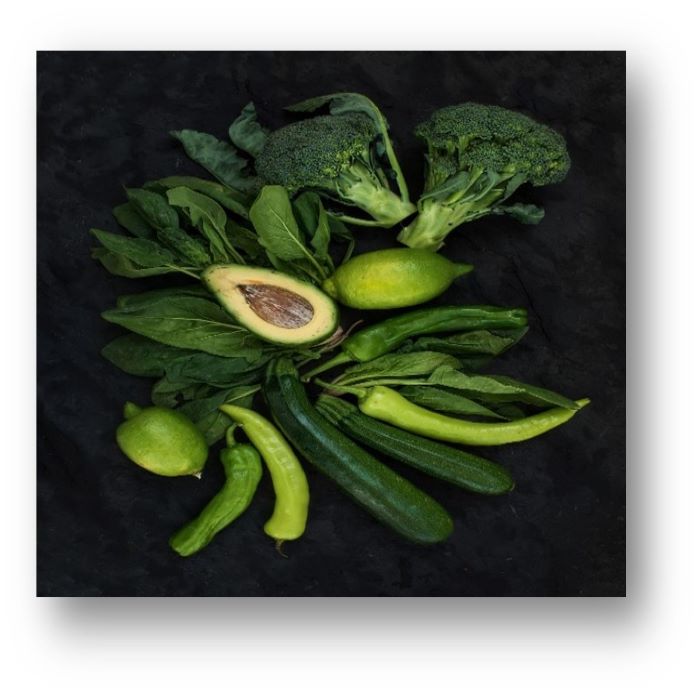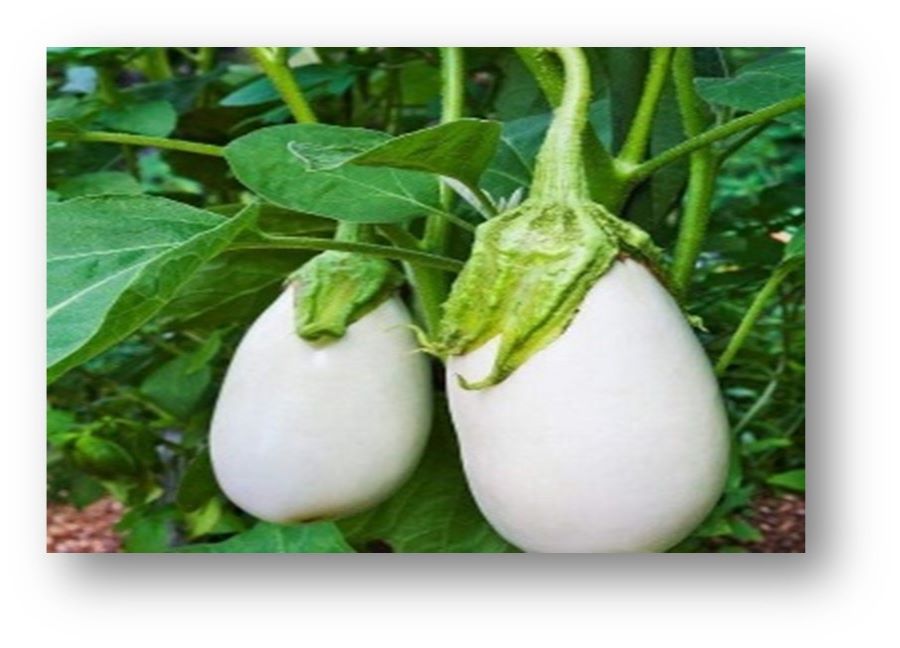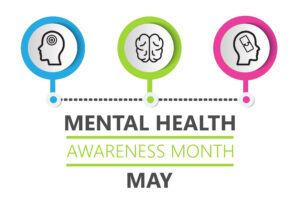If you are what you eat, you may want to pay careful attention to how different foods make your body look and feel young and strong.
Experts suggest aiming for four half-cup servings of fruit and five and five half-cup servings of vegetables everyday to meet recommendations and actions for improved health compliance.
The American Heart Association suggests fruits and vegetables should fill half the plate for each meal to meet these goals. “One cup of raw leafy vegetables or a baked potato should be about the size of a baseball or average-sized fist,” the Association added on its website
Colors of Fruits and Vegetables and Their Associated Nutrients
Fruits and vegetables generally contain less fat, cholesterol or sodium and provide complex carbohydrates, fiber, and nutrients. Most are low in calories, and they contain natural sugar, as opposed to refined sugar, which can cause fluctuations in blood sugar level. Different colors indicate different nutrient profiles, so nutritionists have recommended to focus on getting a little of each color as part of a healthy, balanced diet every day to maximize the nutritional benefits.
“The wide array of bright colors that give fruits and vegetables their visual appeal come from three main types of pigment: carotenoids, which give orange and yellow vegetables their colors; flavonoids, which provide blue, red, and cream colors; and chlorophyll, which gives greens their color. These colorful compounds also provide health and nutrition benefits. Eating healthfully is simpler when you know what the colors of vegetables indicate about their nutritional value, says Kylie Ivanir, a registered dietitian who runs her own practice called Within Nutrition
Why should we eat different colors of food?
Ever wondered why spinach is so green and blueberries are so blue? The answer is phytochemicals. As Ivanir highlights, these substances only occur in nature and plants, and they provide us with numerous health benefits.
Scientists also believe that phytochemicals provide the color to various fruits and vegetables while also interacting with vitamins, minerals, and other health nutrients to provide the human body with several benefits. “This is the main reason why colored fruits and vegetables can provide heart healthy benefits and reduce risk of several lifestyle diseases,” she adds. Does that mean a single-colored fruit only contains a single type of phytochemical? The answer is no– even a single-colored fruit will still contain multiple phytochemicals along with vitamins and minerals to provide several disease-reducing benefits.
The U.S. Department of Agriculture recommends eating at least five to nine servings per day of fruits and vegetables. However, the amount of vegetables consumed is not the only thing to take into consideration. It is also important to consume fruits and vegetables in a variety of different colors This recommendation comes from Isa Kujawski, MPH, RDN, founder of Mea Nutrition LLC. “This is because the different colors of fruits and vegetables indicate the different nutrients they contain. Consuming a rainbow of fruits and vegetables helps insure you get enough of the different nutrients you need for good health,” says Kujawski.
Red

Red fruits and vegetables, such as raspberries, tomatoes, guava, watermelon, red cabbage, kidney beans, cherries, strawberries, and beets, are likely to be rich in the antioxidants: Lycopene and Anthocyanins, according to the U.S. Department of Agriculture. A medium raw tomato provides 3.2 micrograms of Lycopene; a carotenoid that helps your body make vitamin A. Although there is no set daily value for lycopene, Mayo Clinic recommends getting 2 to 30 milligrams per day.
Orange and Yellow

It is time to load up on oranges, lemons, mangoes, peaches, sweet potatoes, corns and other orange and yellow fruits and vegetables. “They are mostly rich in beta-carotene, which the body converts to vitamin A; a nutrient that not only improves night vision, but also helps keep your skin, teeth and bones healthy. They also contain folate, an antioxidant that prevents neural tube defects in unborn infants. A 2-cup serving of sliced cantaloupe provides 541 micrograms of vitamin A, more than 100 percent of your recommended daily intake of 500 micrograms, and 67 of the 320 micrograms of folate you need each day,” explains Kara Landau, a registered dietitian, and founder at Uplift Food.
Green

It pays to love your greens. Especially when you are loading up on some of the healthiest in the green world like spinach, broccoli, asparagus, avocado, green apples, and other leafy greens. Chlorophyll which gives green fruits and vegetables their color is excellent for pH balance and cleansing the body. Several nutritionists and dietitians agree that Chlorophyll boosts red blood cells, helps with weight loss, heals damaged skin, neutralizes toxins, cuts inflammation and prevent cancer. “Green vegetables are good for your eyes, bones and teeth, and their vitamin K content helps your blood to clot properly. A 2-cup serving of raw spinach provides 290 of the 90 to 120 micrograms of vitamin K you need each day. These foods’ antioxidant vitamins, particularly vitamins C and E, may lower your risk of chronic diseases. They provide the phytonutrients lutein and zeaxanthin, which may protect you from vision loss due to eye diseases such as macular degeneration, according to Kujawski, citing a published 2018 scientific review paper in Nutrients.
Blue and Purple

Blue and purple fruits and vegetables such as blueberries, blackberries and beetroot contain anthocyanins, natural plant pigments with powerful antioxidant properties that may reduce the risk of cardiovascular disease. “Purple and blue fruits and vegetables contain a group of phytochemicals known as flavonoids and anthocyanins, which have a mild anti-bacterial effect. Resveratrol, which is most commonly found in grapes, may have a cancer protective effect,” according to the American Institute for Cancer Research.
Tracey Roizman, DC, chiropractic therapy, nutrition and therapeutic exercise, stresses the importance of eating more fresh fruits and vegetable in general to improve heart health. “Blue and purple foods add interest to the color palate of your plate and also bring considerable nutritional value to the table. The anthocyanins and ellagic acid in blueberries have been shown to fight cancer cells in the lungs, stomach, breasts, and pancreas. Anthocyanins and ellagic acid also show anti-inflammatory properties that may prevent cancers of the esophagus and colon,” she adds.
A study published in the Romanian Journal of Diabetes Nutrition and Metabolic Diseases in 2017 linked purple eggplant flour with reduced oxidative stress in hyperglycemic rats. Oxidative stress is linked with a range of diseases, including heart disease, diabetes, cancer, and Parkinson’s disease.
Dark Green

When looking to boost your iron levels, go for the green, says nutritionist Reed Mangels, author of “The Everything Vegan Pregnancy Book.” Spinach, for example, has 3.2 milligrams per one-half cup. Peas, collard greens and lima beans are also good sources. Keep in mind that the iron in plants, called non-heme iron, is not as easily absorbed as that from animal sources; you may need to eat more iron-containing vegetables to obtain the same amount of iron as if you ate meat.
White

White fruits and vegetables, including apples, pears, bananas, cauliflower, and cucumbers, are high in dietary fiber, helping to protect you from high cholesterol, and antioxidant-rich flavonoids, such as quercetin, which is abundant in apples and pears. White vegetables may not seem as vibrant or colorful as others, but they can be highly nutritious. “Cauliflower and turnips contain rich amounts of compounds known as glucosinolates, which may provide some protection against cancer. Garlic and onions contain antioxidants called polyphenols,” she continues, noting this may play an important role in managing chronic inflammation. White beans are valuable sources of protein and fiber, as well as B-vitamins, potassium, and iron. A study published in the April 2017 issue of “World Journal of Gastroenterology” found that consuming more white fruits and vegetables may help protect against colorectal cancer.
No Color

Some vegetables have no color on their inside like eggplants. That does not mean they are deficient in nutrients or phytochemicals. In fact, many types of flavonoids are actually colorless, and they still help the body counter the free radical formation.
Eating and Counting Colors
Experts recommend that our diet should consist of rainbow-colored fruits and vegetables to get all their health benefits. It is a good idea to eat a nutrient-dense diet year-round. So, the next time you shop, make sure to get the right stuff in your cart. If you see all green colored items from the produce section- like spinach, green apples, kiwis, go back and swap one of the items for oranges, strawberries, or blueberries to get those incredible health benefits.









